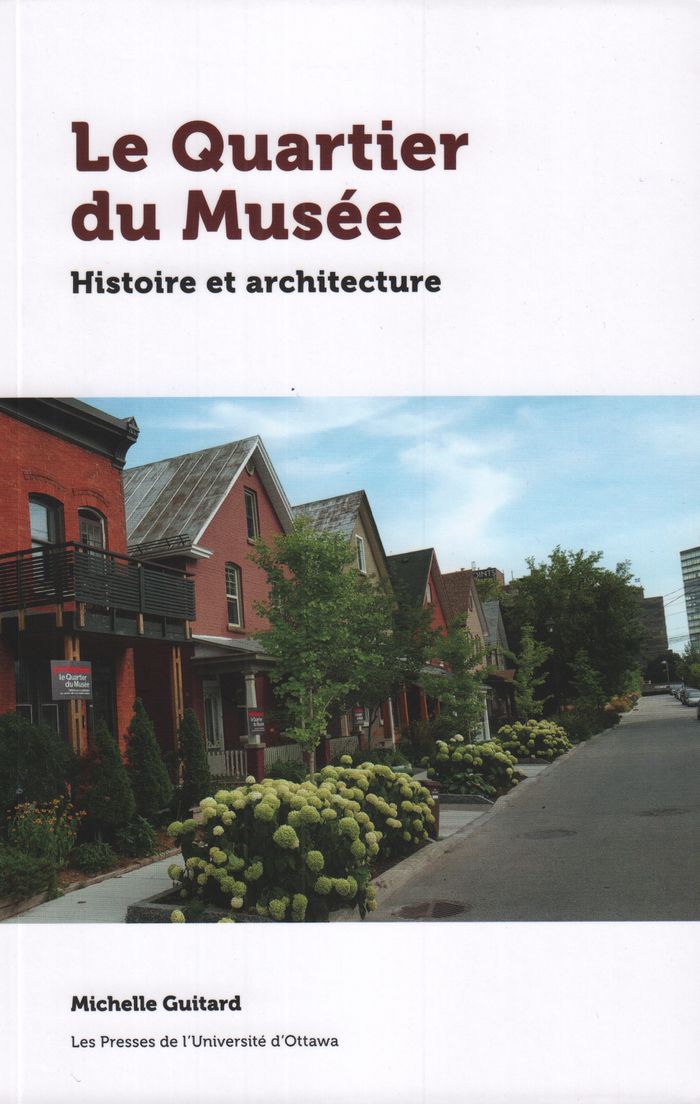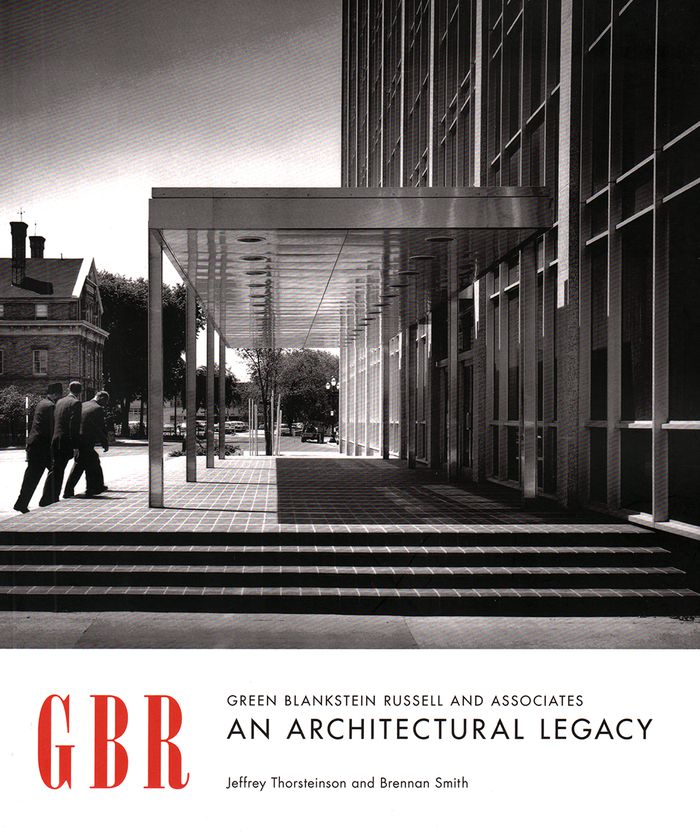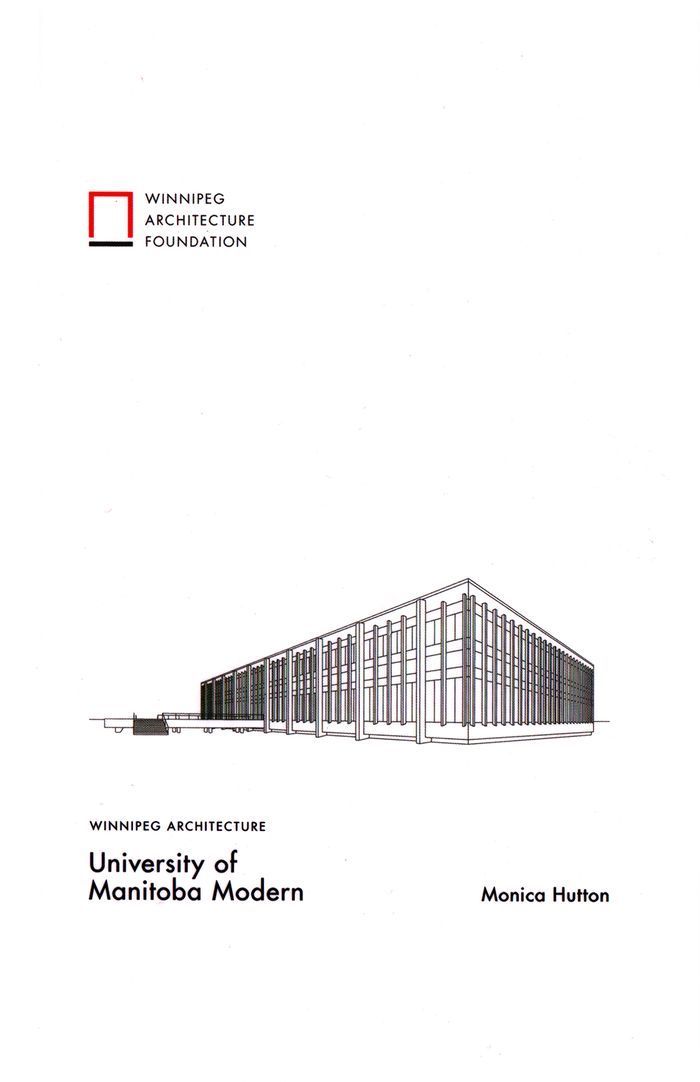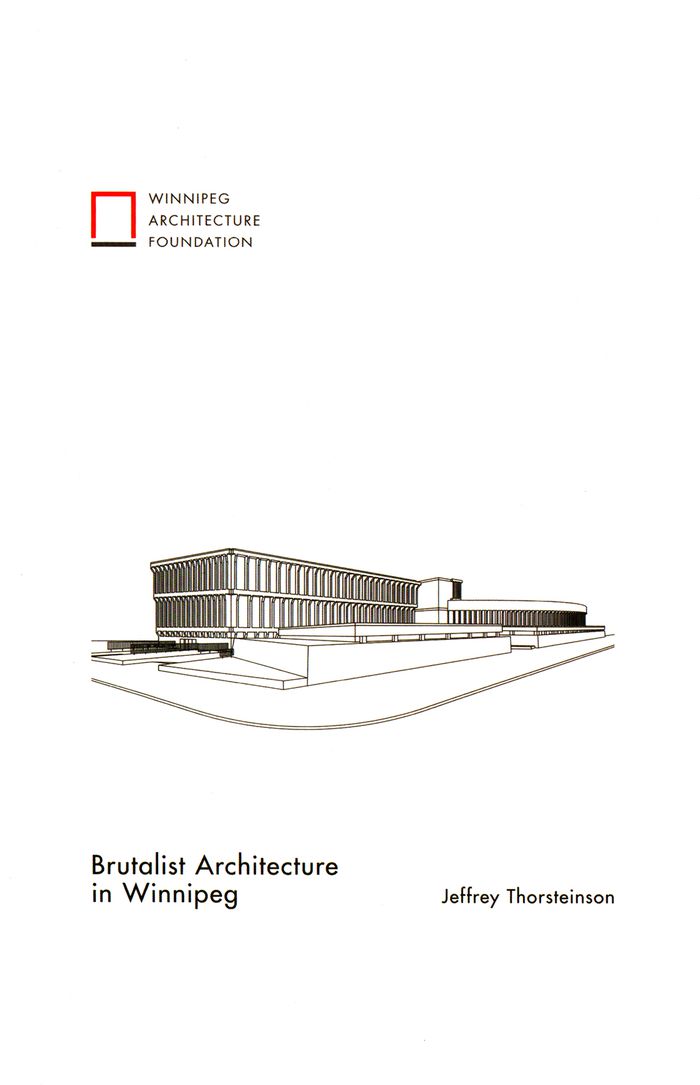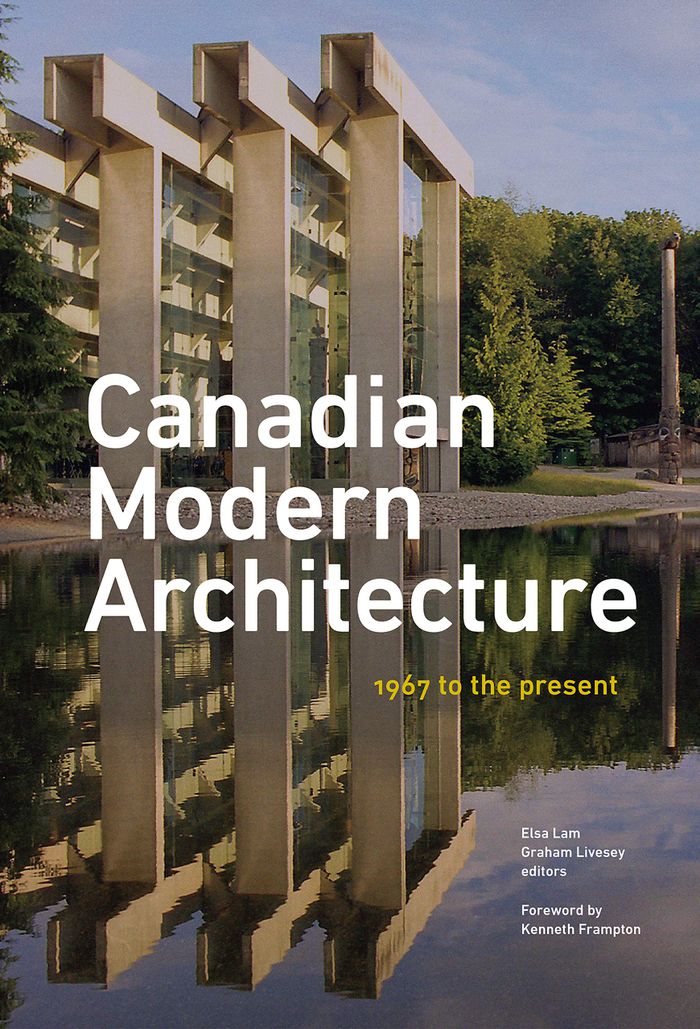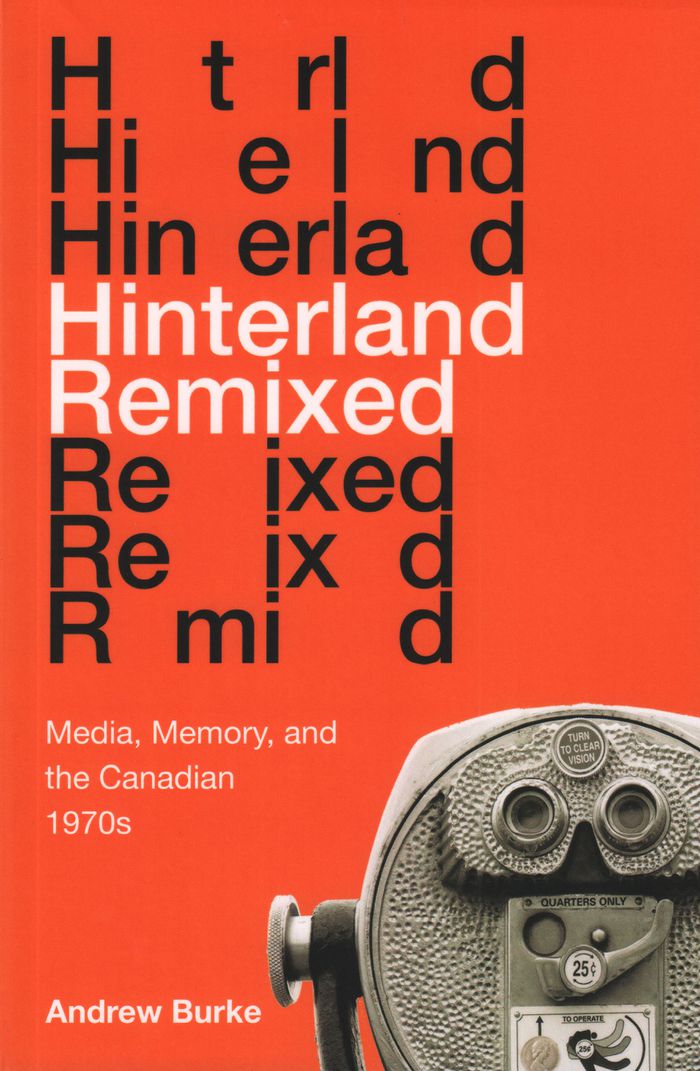$39.95
(available to order)
Summary:
Un des rares témoins de la Ville de Hull d’avant 1900, le patrimoine bâti du Quartier du Musée reflète l’adaptation des divers courants architecturaux de la région de la capitale nationale du Canada : 53 des bâtiments de ce quartier datent d’avant 1910, alors que 44 d’entre eux précèdent l’incendie de 1900. Les brèves histoires des propriétaires et occupants révèlent(...)
Le quartier du musée : histoire et architecture
Actions:
Price:
$39.95
(available to order)
Summary:
Un des rares témoins de la Ville de Hull d’avant 1900, le patrimoine bâti du Quartier du Musée reflète l’adaptation des divers courants architecturaux de la région de la capitale nationale du Canada : 53 des bâtiments de ce quartier datent d’avant 1910, alors que 44 d’entre eux précèdent l’incendie de 1900. Les brèves histoires des propriétaires et occupants révèlent l’évolution de l’histoire sociale, économique et culturelle de l’Outaouais. Les activités socioéconomiques des habitants, propriétaires et locataires permettent de mieux connaître les nombreuses personnalités qui ont joué un rôle de grande importance dans l’histoire de la ville et de la région.
Architecture in Canada
Competing for excellence in architecture: editorials from the Canadian Competitions Catalogue
$84.95
(available to order)
Summary:
A travel guide for those in search of architectural quality, this book can be browsed in many ways. Written in a clear and concise manner by about thirty authors, it features a collection of editorials from the Canadian Competitions Catalogue (CCC), a large online digital archive open to the public since 2006. The editorials explore more than sixty Canadian architecture(...)
Competing for excellence in architecture: editorials from the Canadian Competitions Catalogue
Actions:
Price:
$84.95
(available to order)
Summary:
A travel guide for those in search of architectural quality, this book can be browsed in many ways. Written in a clear and concise manner by about thirty authors, it features a collection of editorials from the Canadian Competitions Catalogue (CCC), a large online digital archive open to the public since 2006. The editorials explore more than sixty Canadian architecture competitions held in the last seventy years. Especially in recent years, both public and private institutions have organized competitions across Canada, producing hundreds of architectural, urban planning, and landscape design projects. Together these proposals, most of which remain unbuilt, constitute a fantastic treasure in our tangible and intangible common heritage. Given that competition organizers, designers, juries, and critics never operate alone, there is no doubt whatsoever that this book results from the collaboration of a myriad of people, contributing to and competing for excellence in architecture.
Architecture in Canada
$35.00
(available to order)
Summary:
Winnipeg-based architecture firm Green Blankstein Russell and Associates (GBR) opened in the slow years of the Great Depression. From this inauspicious starting point the firm would grow to become, by the 1950s and 60s, a major player on the Canadian architectural scene: the largest architectural office between Ontario and British Columbia, with seven offices in four(...)
Architecture in Canada
December 2017
Green Blankstein Russell and Associates: an architectural legacy
Actions:
Price:
$35.00
(available to order)
Summary:
Winnipeg-based architecture firm Green Blankstein Russell and Associates (GBR) opened in the slow years of the Great Depression. From this inauspicious starting point the firm would grow to become, by the 1950s and 60s, a major player on the Canadian architectural scene: the largest architectural office between Ontario and British Columbia, with seven offices in four provinces. GBR was a hub for partnership and training, and was a pioneering force in its inclusion of women and members of Canada's diverse cultural communities within the field of design. Covering a wide range of individual buildings and practitioners, this book explores the significant mark GBR made on its hometown and across the country, as well as the firm’s role as a leader in the growth of Modernist architecture in Canada.
Architecture in Canada
$15.00
(available to order)
Summary:
This publication provides an architectural and historical tour of buildings and landscapes on the University of Manitoba campus from the post-1945 period. The School of Architecture has a strong legacy of graduates who have left their design imprint both on the campus and across Canada.
University of Manitoba Modern
Actions:
Price:
$15.00
(available to order)
Summary:
This publication provides an architectural and historical tour of buildings and landscapes on the University of Manitoba campus from the post-1945 period. The School of Architecture has a strong legacy of graduates who have left their design imprint both on the campus and across Canada.
Architecture in Canada
$15.00
(available to order)
Summary:
Like many stylistic terms in architecture, the exact parameters denoted by the word “Brutalism” are difficult to precisely pin down. Brutalism is a style which was particularly prominent during the late 1960s and early 1970s. The emphasis on harsh geometric forms and unadorned rough concrete and brick have resulted in very strong feelings of hate or love for these(...)
Brutalist architecture in Winnipeg
Actions:
Price:
$15.00
(available to order)
Summary:
Like many stylistic terms in architecture, the exact parameters denoted by the word “Brutalism” are difficult to precisely pin down. Brutalism is a style which was particularly prominent during the late 1960s and early 1970s. The emphasis on harsh geometric forms and unadorned rough concrete and brick have resulted in very strong feelings of hate or love for these buildings. This tour documents a number of Brutalist style buildings in Winnipeg and explores their genesis, as well as the place of Brutalism in the history of the city.
Architecture in Canada
Endangered species
$30.00
(available to order)
Summary:
"ENDANGERED SPECIES" investigates the notion of modern architecture as an endangered genus. Is modernism bound for extinction? The twenty-six buildings included in the book Endangered Species are threatened for demolition. The book aims to engage a debate about the survival of Canadian Modernism.
Endangered species
Actions:
Price:
$30.00
(available to order)
Summary:
"ENDANGERED SPECIES" investigates the notion of modern architecture as an endangered genus. Is modernism bound for extinction? The twenty-six buildings included in the book Endangered Species are threatened for demolition. The book aims to engage a debate about the survival of Canadian Modernism.
Architecture in Canada
$49.95
(available to order)
Summary:
''Canadian Contemporary'' is a compilation title offering comprehensive insight into Canada's residential architecture realm as it currently stands. Photographs and detailed plans highlight an array of designs from some of the country's most talented contemporary architects. Each project is a unique example of the different ways each firm/architect interprets and caters(...)
Canadian contemporary: the northern home
Actions:
Price:
$49.95
(available to order)
Summary:
''Canadian Contemporary'' is a compilation title offering comprehensive insight into Canada's residential architecture realm as it currently stands. Photographs and detailed plans highlight an array of designs from some of the country's most talented contemporary architects. Each project is a unique example of the different ways each firm/architect interprets and caters to the types of lifestyles that inhabit their work. Adaptable spaces and savvy design solutions reflect a strong focus of the integration of modern day life into Canadian homes. With an introduction by acclaimed Professor or Architecture, Avi Friedman, this book presents the latest trends in Canadian living and residential home design.
Architecture in Canada
$80.00
(available in store)
Summary:
Canada''s most distinguished architectural critics and scholars offer fresh insights into the country''s unique modern and contemporary architecture. Beginning with the nation''s centennial and Expo 67 in Montreal, this fifty-year retrospective covers the defining of national institutions and movements, how Canadian architects interpreted major external trends, regional(...)
Canadian modern architecture: 1967 to the present
Actions:
Price:
$80.00
(available in store)
Summary:
Canada''s most distinguished architectural critics and scholars offer fresh insights into the country''s unique modern and contemporary architecture. Beginning with the nation''s centennial and Expo 67 in Montreal, this fifty-year retrospective covers the defining of national institutions and movements, how Canadian architects interpreted major external trends, regional and indigenous architectural tendencies, and the influence of architects in Canada''s three largest cities - Toronto, Montreal, and Vancouver. Co-published with Canadian Architect, this comprehensive reference book is extensively illustrated and includes fifteen specially commissioned essays.
Architecture in Canada
$29.95
(available to order)
Summary:
Like the flute melody from ''Hinterland Who's Who,'' the 1970s haunt Canadian cultural memory. Though the decade often feels lost to history, ''Hinterland Remixed'' focuses on boldly innovative works as well as popular film, television, and music to show that Canada never fully left the 1970s behind. Andrew Burke reveals how contemporary artists and filmmakers have(...)
Hinterland remixed: media, memory and the Canadian 1970s
Actions:
Price:
$29.95
(available to order)
Summary:
Like the flute melody from ''Hinterland Who's Who,'' the 1970s haunt Canadian cultural memory. Though the decade often feels lost to history, ''Hinterland Remixed'' focuses on boldly innovative works as well as popular film, television, and music to show that Canada never fully left the 1970s behind. Andrew Burke reveals how contemporary artists and filmmakers have revisited the era's cinematic and televisual residues to uncover what has been lost over the years. Investigating how the traces of an analogue past circulate in a digital age, Burke digs through the remnants of 1970s Canadiana and examines key audiovisual works from this overlooked decade, uncovering the period's aspirations, desires, fears, and anxieties. He then looks to contemporary projects that remix, remediate, and reanimate the period. Exploring an idiosyncratic selection of works, this book asks key questions about nation, nostalgia, media, and memory.
Architecture in Canada
$27.95
(available in store)
Summary:
''Snacks'' is a history of Canadian snack foods, of the independent producers and workers who make them, and of the consumers who can’t put them down. Janis Thiessen profiles several iconic Canadian snack food companies, including Old Dutch Potato Chips, Hawkins Cheezies, and chocolate maker Ganong. These companies have developed in distinctive ways, reflecting the unique(...)
Snacks: a Canadian food history
Actions:
Price:
$27.95
(available in store)
Summary:
''Snacks'' is a history of Canadian snack foods, of the independent producers and workers who make them, and of the consumers who can’t put them down. Janis Thiessen profiles several iconic Canadian snack food companies, including Old Dutch Potato Chips, Hawkins Cheezies, and chocolate maker Ganong. These companies have developed in distinctive ways, reflecting the unique stories of their founders and their intense connection to specific locations. These stories of salty or sweet confections also reveal a history that is at odds with popular notions of ''junk food.'' Through extensive oral history and archival research, Thiessen uncovers the roots of our deep loyalties to different snack foods, what it means to be an independent snack food producer, and the often-quirky ways snacks have been created and marketed.
